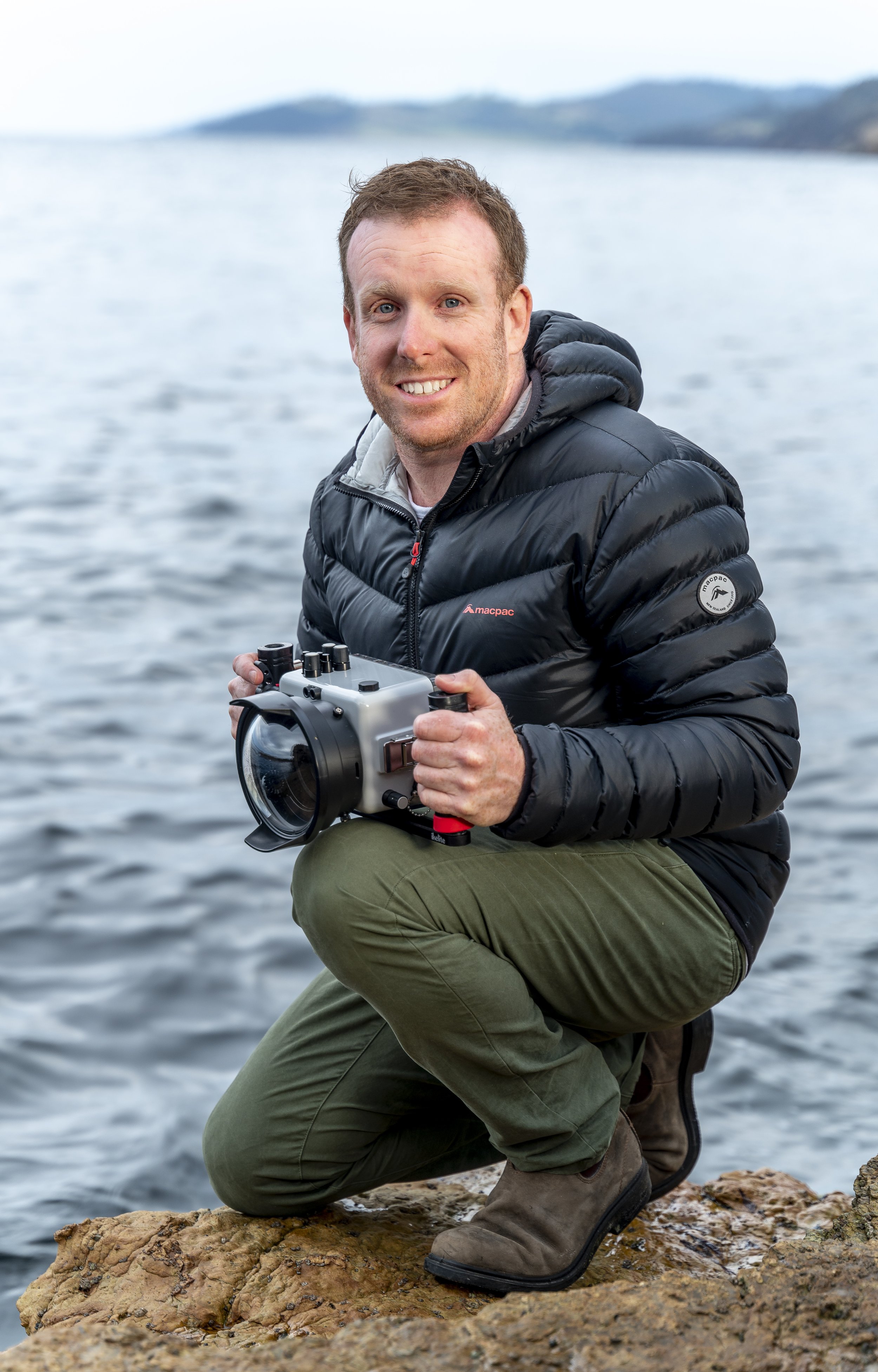joel williams
Joel Williams is no stranger to using a camera. He had his first camera at age 5 and took his first underwater photos at the age of 15 when his passionate geography teacher let him use an underwater film camera. Having always loved photography, it’s been within the last decade that he has really been able to hone his underwater camera set up.
Even at a young age, he knew that he wanted to be a marine scientist. Joel currently works as a Senior Research Fellow at the Institute of Marine and Arctic Studies in Tasmania and owns a few different cameras, and is passionate about showcasing the amazing and unique marine life found along the Great Southern Reef.
As a marine scientist, Joel Williams likes to incorporate his knowledge to share the scientific details alongside his imagery on social media posts, sharing facts about a fish, invertebrate, algae - that most people wouldn’t know and showcase how special the Great Southern Reef is.
By sharing imagery with the community, he hopes it will raise awareness of what is under the surface across southern Australia and shed light on the vulnerability of these ecosystems.
“The Great Southern Reef is often overlooked for the Great Barrier Reef especially when it comes to issues such as climate change.”
“Through my imagery I aim to highlight why we need to be doing more to help protect the ocean so that our kids and grandkids can also enjoy it like me.”
Take a read of some of his captions and make sure to follow his pages for more marine insights @joel_williams_photos.
Image right: A young Māori octopus at Blackmans Bay, Tasmania. This is the largest octopus species in southern Australia, growing to a length of 1m. They like to hang around on reefs and seagrass beds from 1m to over 500m deep. It was great to get back in the water for a dive at “the local”.
The face of the common (weedy) seadragon, Phyllopteryx taeniolatus, doesn’t need any makeup as it has some spectacular natural patterns and coloration. Check out that hairstyle. I haven’t touch the colours on this image, these are the natural colours and brightness. It is easy to see why these mysterious fish are one of the most popular species of the Great Southern Reef.
This little one is actually an introduced species the variable triple fin, Forsterygion varium. Believed to have originally arrived by ship from New Zealand and is now fairly common in the Derwent River estuary.
This southern rock lobster was truly out in the open and climbing the ecklonia kelp on top of a boulder. Was not phased by me shoving a camera with two large strobes in its face. Rock lobsters definitely do well in no-take marine reserves!
Learn about more passionate photographers and artists inspired by the Great Southern Reef.










